Some hotels bowl you over with extraordinary opulence. Hotels like The Ritz in Madrid, The Cipriani in Venice, or Le Meurice on Paris’ Rue de Rivoli fit this description. They’re too much to handle, there is a sense of not knowing where to look. Then there are the modernists: slick, minimal, uber-functional design hotels with streamline finishes and a clear statement of intention. These can be startling places, comfortable, inspiring and fresh, but lacking in something. For me, there is another category, and these hotels are the ones that I love the most, the ones that really get under the skin. Hotels which somehow incorporate a rare sense of style, superb service, fascinating history and fortuitous positioning; they’re the ones you always remember. The Connaught in London is one such place, The Peninsula in Hong Kong or La Mamounia in the Royal Gardens in Marrakech come to mind too – once you’ve been to these hotels the experience becomes part of you.
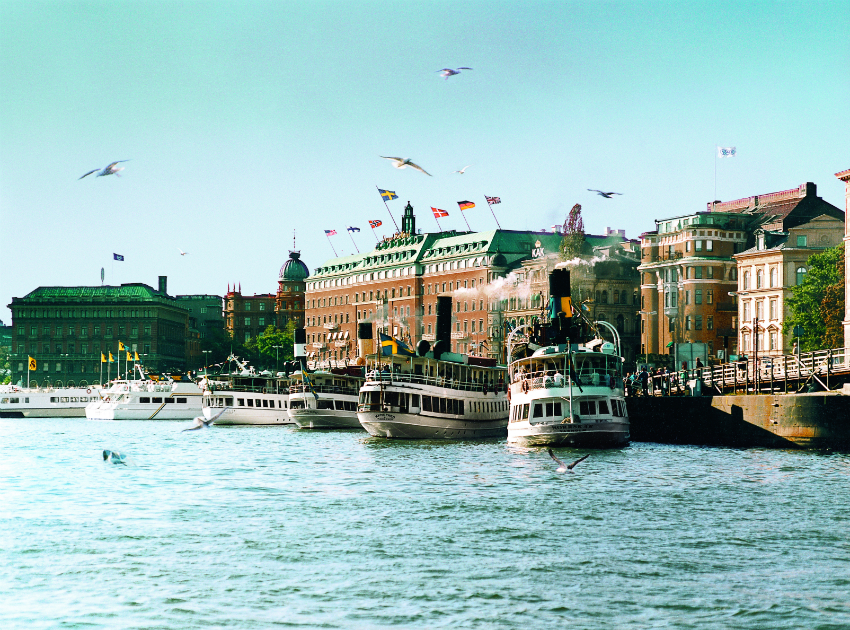
Grand Hôtel, Stockholm sits firmly within this latter category of hotels; it is a seasoned legend in one of the great cities of the Northern Hemisphere. Grand Hôtel inhabits a commanding position at the waterfront on Södra Blasieholmshamnen and stares out into the harbour where Sweden meets the icy waters of the Baltic Sea.
Grand Hôtel has stood, proudly looking out over these majestic waters, since 1874. It has never closed, not once in its 139 year history. If a section of the hotel needs renovation, that floor or wing closes, never the hotel. There is a dedication to unsurpassed customer service that endures. French chef Régis Cadier opened Grand Hôtel as the first Swedish hotel to fit into the mould of the extravagant continental-style hotels around Europe. It was his vision to compete with the greats and bring a new level of luxury to Stockholm. Today the hotel still a holds a charming sense of slightly antiquated northern European hauteur. To step into the beautiful, oak-panelled and gold trimmed Cadier Bar is to enter a blissful cocoon, a place of freezing cold Martinis and warm welcomes.
We arrive and move up to our room to warm up from the cold autumn air. The ice is starting to bite in this exposed cityscape; it feels good to stand at the window and look out, to see the thin lattice of ice in the corners of the windows, to see the ice-breakers in the bay, with proud Swedish flags at their helm. It feels singularly Scandinavian and wintry and warm. Our room is huge and displays a distinguished elegance that speaks of long decades of the enjoyment of aesthetes. The floorboards shine with a deep, golden patina, the furniture is regency style, lived in and remarkably beautiful. It’s a great room, the kind of room you struggle to leave.
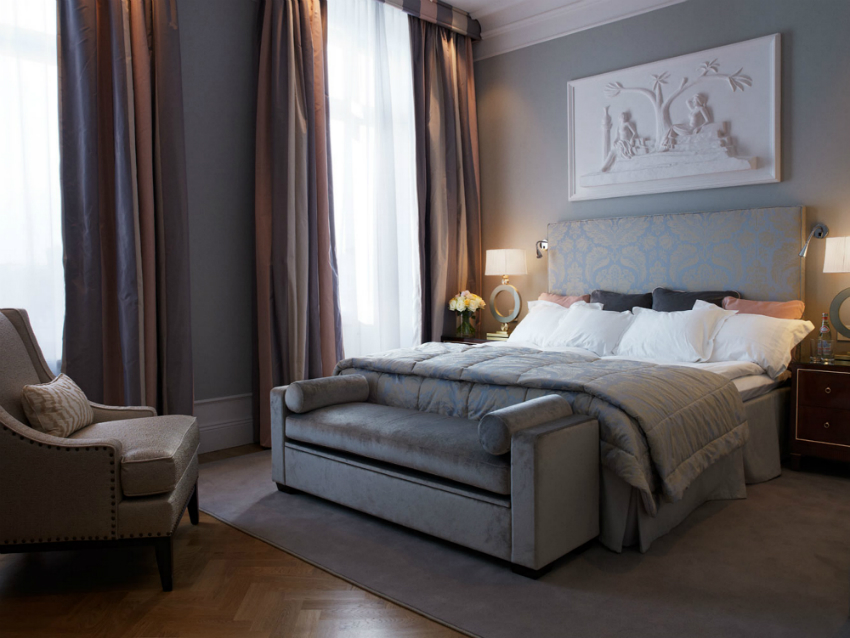
We do leave eventually, and make it to the Cadier Bar. The bar is busy now, in full swing. Most of the patrons of the bar are smart, mature-looking Swedes, weather-worn, but handsome. The drinks are properly made and strong, there’s no messing around. It’s something I adore about the Scandinavians, they revel in an earnest, carefully constructed hedonism that’s rarely found elsewhere. We sample a bracing cocktail that includes Green Chartreuse, Gin, Crѐme de Violette and fresh rosemary. What a way to start an evening – a bright, intellectual glass to kick-off the night’s festivities.
Grand Hôtel managed its greatest coup when the owners negotiated a joint venture with Sweden’s most celebrated chef, Mathias Dahlgren. Dahlgren is a gentleman of the highest order and a cerebral master of his art. I first met him at a dinner in London. The dinner was a private affair in an sumptuous Notting Hill townhouse. The assorted crowd were seasoned diners. Cote-Rotie flowed like water and laughter was abundant. Knowing that Mathias, the much-heralded two-star chef was over and cooking for us, I expected a dainty, multi-course affair. Our chef cooked lamb stew, with wild mushrooms and an apple crumble to finish. It was one of the most delicious meals I will ever eat.
At Grand Hôtel, Dahlgren runs two restaurants. There is a fine-dining restaurant, Matsalen, which serves two extraordinary menus – one a seasonal tasting menu, the other with a specific, esoteric focus. Matbaren the second restaurant is more of a ‘dining-bar’, a relaxed set up, with superb food and interesting wines, served without too much fuss. We’re seated early and have a little time to survey the menu before a plate of aged alpine cheese is brought to table to enjoy with a raw tasting, low dosage, ‘natural’ champagne. The combination is magnificent. Alone, the champagne might seem lacking in finesse, but with the meaty, lactic cheese it sings. The room is low-lit and tables are without cloths. Even though gastro-tourists travel across the world to dine here, the charm and skill of the kitchen and front of house teams allow there to be a pleasing illusion of absolute ease. On a busy Saturday night, the place feels as if it is full of friends, enjoying themselves.
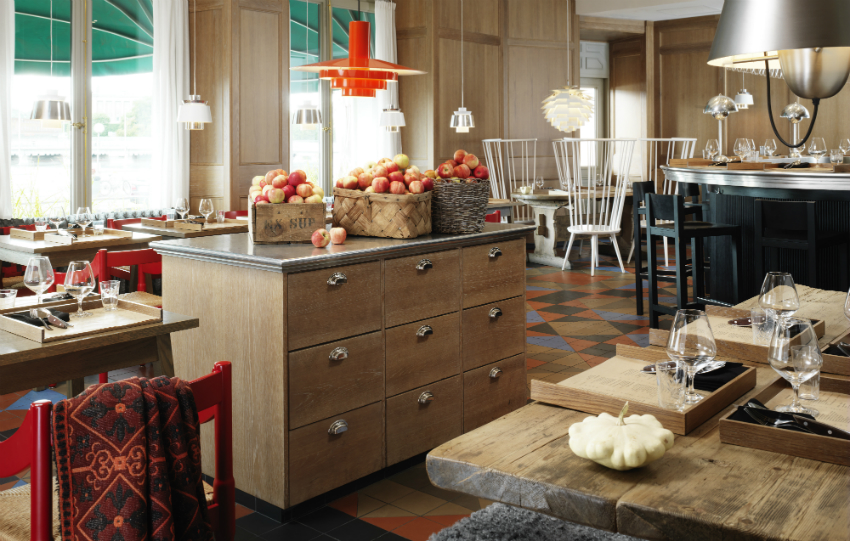
The dishes we eat are small, focused and masterfully executed. At times, they are playful – the prawn-tempura steamed bun is a reference to a recent visit from New York superchef, David Chang. Elsewhere there is drama and a proud showcasing of the finest examples of Nordic produce. Tartar of reindeer is served with Kalix Löjrom – Swedish caviar – one of the greatest bounties to be harvested from the Baltic. Roast pork is served with spinach and cream and thick slices of pungent, faintly feral truffles from Gotland, a low-lying easterly island off the coast of Sweden. Wines follow the feral theme. As with many of the New Nordic restaurants (although strictly-speaking Dahlgren pre-dates this movement by a long way), the sommelier at Matbaren favours ‘natural’ wines. Thankfully the tone here is far less evangelical than at some of the other restaurants in Stockholm and Copenhagen and the wines we taste are and vibrant and original. They are at times a little murky and wild, but most are well-made and interesting. Particularly fine is a Syrah that we drink with the pork and truffles that’s been vinified and bottled in Burgundy by Frederic Cossard. The wine is a little wacky, a tad funky, but delicious, and a fascinating meeting, or indeed, combining of terroirs.
At this point in the proceedings. Mathias enters the room. There’s something about Mathias – he has a presence. He approaches our table wearing chef whites and a large, vaguely ominous black leather apron. We’re getting to the end of our meal and Mathias invites us through to the kitchen; we gladly accept this audience with a master. Chef Dahlgren oversees both kitchens, but it is Matsalen, the fine-dining restaurant, where his sharp vision and understanding of the subtleties and nuances of Scandinavian cooking and ingredients comes into its own. He stands feeding us small plates whilst making an impromptu presentation on a white board, explaining with great brio the ways in which his dishes are constructed. He explains what flavours we expect to find with certain textures, and using carefully plotted diagrams, shows how he alters balances and reassesses certain relationships between ingredients. His team are clearly as in awe of him as we are; it feels like a great privilege to be sharing a beer and a chat with a chef of such easy, cerebral charm. Before we leave we ask Mathias for a tip for lunch the next day. He thinks for a while, and then he offers to take us out to his favourite Sunday lunch spot – Stockholm’s best kebab restaurant. He’ll pick us up at lunchtime and take us to Amida.
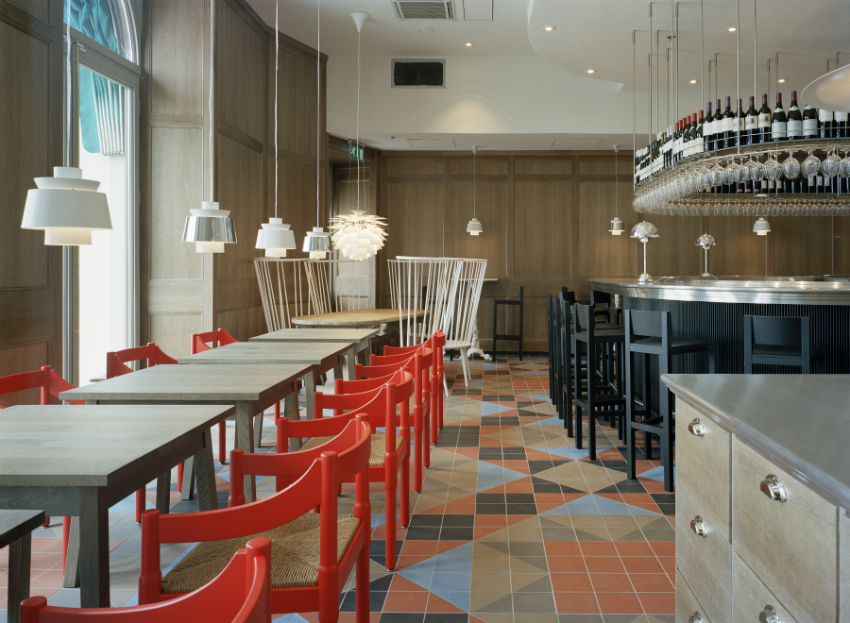
Mathias picks us up and suggests we make a quick stop en route to lunch. We visit the public allotments, where Restaurant Mathias Dahlgren keeps a garden. It’s a fresh, cold morning and the gardens sparkle in the wintery light. We bump into the gardener who lives on site and is preparing for a private lunch. This man is what you might call the right side of rugged; a bearded Nordic gent who’s cooking hunks of lamb on an open fire, baking bread on a stick in the fire, with Sweden’s most famous opera singer on in the background. It is a vision of extreme civility.
The kebab restaurant is in the slightly run down, southern side of the city, Södermalm. This is an area with a large Turkish and Iranian population who moved to Stockholm is the 1970s and 1980s. Amida is on a street with many fast food outlets. Dahlgren is quietly confident that we’re going to enjoy their shish kebab. He’s well-loved in here; imagine how great it feels to have Sweden’s finest chef in your fast food restaurant. We drink bitter sweet Turkish tea and salty-sour yoghurt and await our meal.
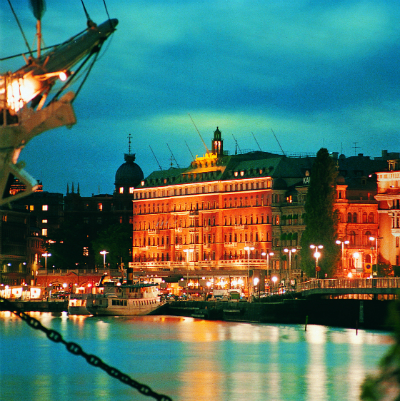
The kebab is, of course, a joy. A triumphant wand of piquant minced lamb, wrapped in soft flatbread and bolstered by fragrant green leaves and chilli. The experience is superb, a rare way to spend a Sunday, a curio of a meal. Dahlgren dispatches his kebab at speed and sips his yoghurt; he’s calm, you get a strong sense that he’s a sensualist, he savours moments in the best possible manner.
We walk out into the cool Swedish Sunday afternoon, wrapped up and fortified by our spiced lamb. Dahlgren drops us off before heading home to prepare pork belly and truffles in the warmth of his kitchen at home. As I contemplate the BA ‘snack’ that awaits us this evening, I don’t think I’ve ever envied anything more.




